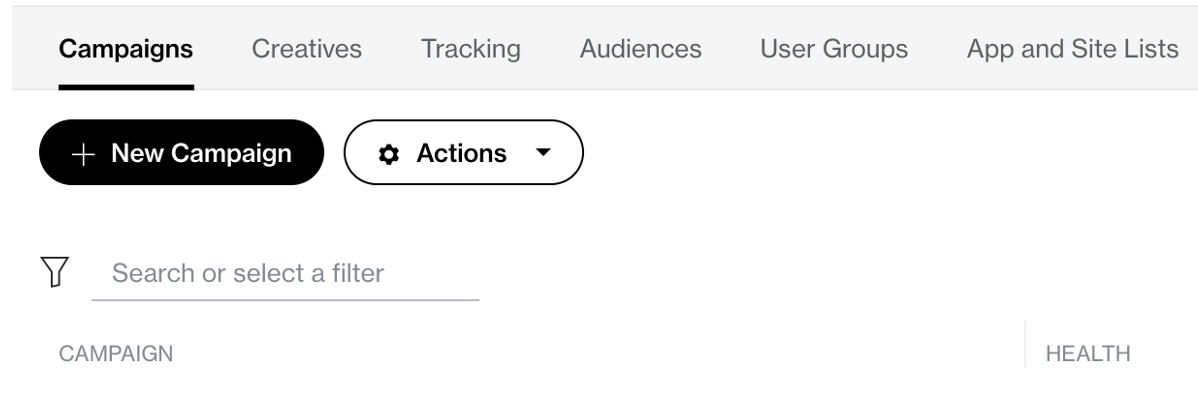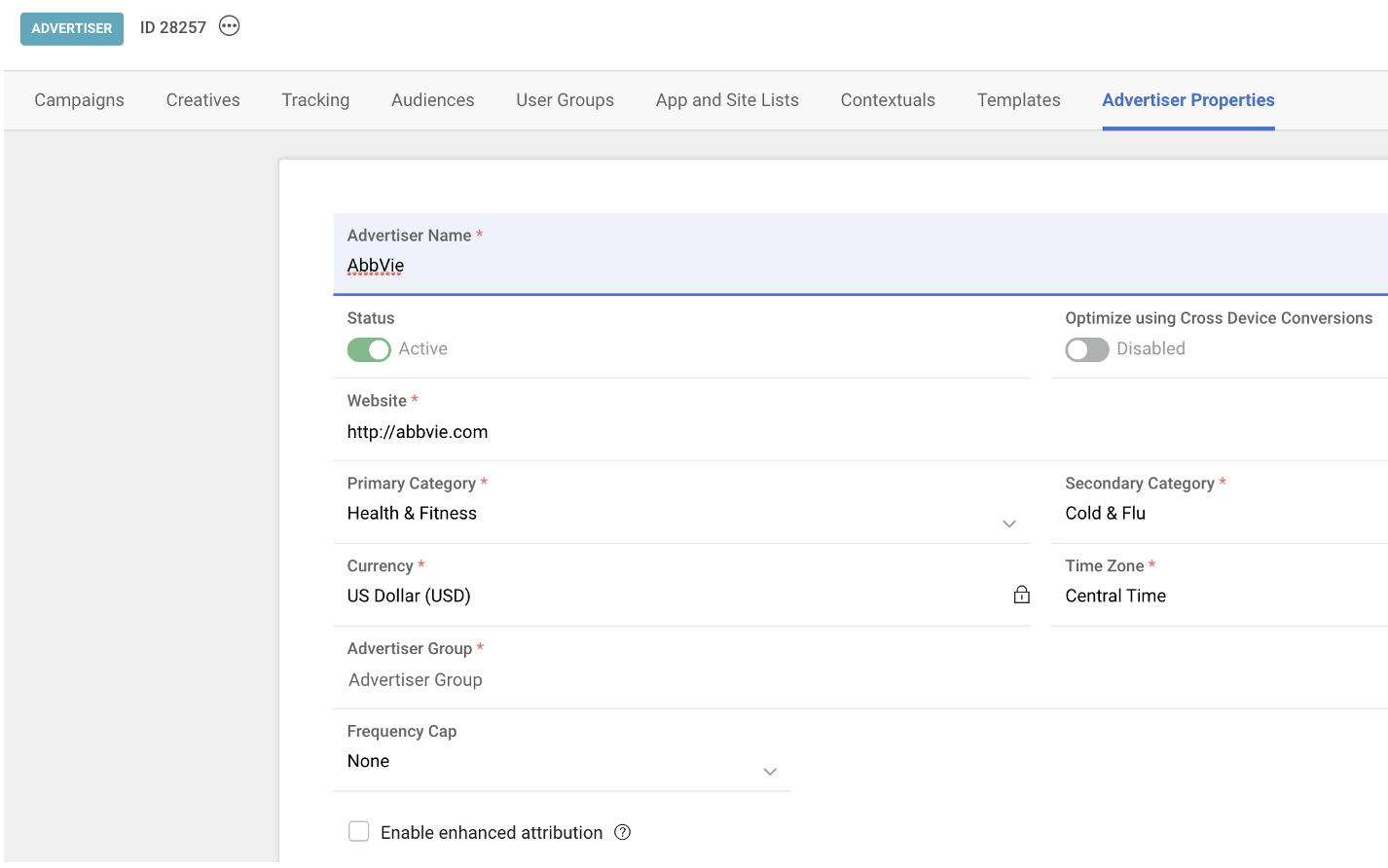How to Enable Enhanced Attribution¶
Yahoo Enhanced Attribution works by leveraging a click ID to count post-click conversions, using a privacy-friendly mechanism that does not require or depend on a third-party cookie. These conversions are counted according to the attribution settings specified in the rule setup and those that meet all of the rule conditions.
Important
Click IDs are not identifiers and cannot be used for post-impression conversions, modeling or any other audience-building solutions in the Yahoo DSP.
How It Works¶
To enable Enhanced Attribution on either the Yahoo Native or Yahoo DSP ad platforms, you’ll need to perform two basic steps:
Turn on the feature in the UI.
Ensure that a JavaScript Dot Tag is implemented on the client website.
In the DSP UI¶
In the DSP UI, navigate to the Advertiser in your seat.
Click into Advertiser Properties in the top bar.

In the bottom left corner, click the Enable enhanced attribution button.

This automatically appends the Yahoo Click ID macro (vmcid) to the destination url for the Yahoo dot pixel to pick up.
Based on your specific setup (for example, ad server or 3p tracking), you’ll need to ensure that the Click ID is being passed through correctly.
Refer to the documentation guides based on your specific tagging structure.